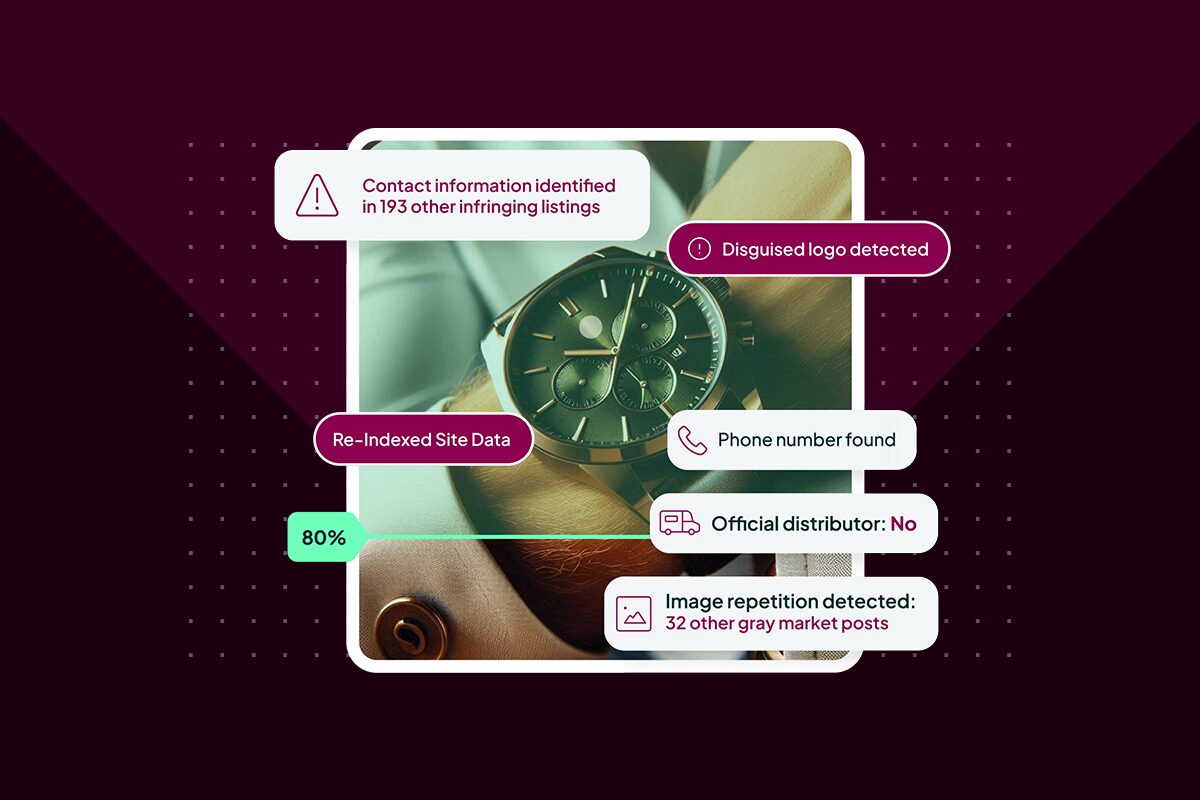Blog
How social media behavior influences counterfeit purchases
- Brand Protection

8% of US consumers buy fake designer brands to look good and 5% lie to promote luxury products or a brand, according to new Corsearch research.
This intentional misrepresentation has a hugely damaging impact and underlines the challenges facing brands in retaining control over consumer perception and the quality of their digital experience.
Counterfeiting and other infringement on social media is a huge problem that brands cannot afford to ignore.
Research reveals social media infringement is rife
Over a quarter (26%) of US consumers have been fooled into buying fake goods over the past 12 months, and this is fueled by the volume of fakes on social media platforms. 56,769 active accounts promoting counterfeits were discovered on Instagram in 2019 – an increase of more than 171% compared to three years prior (20,892 counterfeit accounts) [1].
A quick search on Instagram or Facebook for high-end luxury goods brings up hundreds of posts advertising fake products for sale. Equally, counterfeit cosmetics are rife, putting consumers in direct contact with harmful ingredients.
With 45% of the world’s population now active social media users (The Next Web 2019), online counterfeiting poses a greater risk than ever to consumers and brands.
Social media influencers found promoting counterfeits
5% of US consumers admit to paying for fake followers on social media (a tactic deployed by some budding influencers), highlighting that misrepresentation is a widespread issue online.
A number of prominent influencers have previously been found to be promoting counterfeit products. Either turning a blind eye or remaining unaware of the true nature of the products, these high-profile social media users have peddled fake goods to millions of their loyal followers.
In 2018, influencers Emma Cakecup and Oltean Vlad were revealed to be promoting websites that offered counterfeit products such as watches[2] to a combined follower base of over 1 million consumers.
While there have been several cases involving influencers knowingly promoting counterfeit goods, there are many online personalities that simply do not verify products, possibly leading to the sale of dangerous counterfeit goods from ecommerce sites.
In a 2019 BBC investigation[3], three well-known influencers were asked to promote a fake diet drink that contained cyanide, a highly toxic chemical. The trio agreed despite not trying the drink or understanding the dangers posed by the ingredients within.
The emergence of social buying platforms
30% of online shoppers now say they would be likely to make a purchase from a social media network like Facebook, Pinterest, Instagram, Twitter or Snapchat[4]. Infringers have recognized the adoption of social buying platforms across the globe, and now use them to promote fake versions of leading branded products.
Established platforms such as Facebook, WeChat and Douyin [5] have inbuilt or planned ecommerce functionality. Infringers use this to link products in their posts to ecommerce sites. They then promote these posts and use targeted advertisements to expose fakes to a wider audience.
Group-buying platforms such as Pinduoduo are also fast emerging with consumers grouping together to purchase products in bulk, at a discount, direct from manufacturers.
Social media platforms without ecommerce functionality are also key hunting grounds for counterfeiters, with 60% of Instagram users saying they find new products on the platform[6].
Bad actors direct consumers to low-profile, illegitimate websites. Often, users are sent links via private message to transactions on services such as PayPal, AliPay or other equivalents. This provides a further headache for brand owners and warrants the use of advanced image-matching technology to locate the sellers responsible.
How brands can combat social media infringers
29% of US consumers believe brands should be doing more to stop the purchase of counterfeit goods online, according to Corsearch research. Brands must take a two-pronged approach to protect consumers from harmful fakes on social media.
1. Collaboration
It’s imperative to build strong working relationships with social media platforms, join anti-counterfeiting associations and work alongside law enforcement to tackle large-scale criminal networks operating globally.
Insights into infringer activity and concealment tactics can be shared and acted on together. For example, social media platforms can allow investigators access to closed groups to locate infringers and shut down their operations.
2. Consumer awareness
Consumers must also be made aware of the dangers of purchasing fakes and how to spot them online. Corsearch research reveals that 29% have purchased or would consider purchasing fake toys – counterfeits with potentially devastating consequences if given to children.
Consumer awareness campaigns that span across brands’ digital channels are critical. These campaigns should contain guides that tell consumers how to spot counterfeits and the official channels that they should only purchase from.
Some brands go one step further by providing an online form or tool on their website for consumers to report suspected counterfeit items. This alerts a brand to the existence of a particularly visible and high-risk product that could easily be purchased by unwitting consumers, enabling them to remove it quickly.
Technology to tackle counterfeits on social media
Brands shouldn’t have to bear the brunt of criminal activity online. That’s why we are driving forward the agenda for closer collaboration between brands, platforms, and regulators. Only with a concerted, joint effort, can sophisticated global criminal networks be prevented from burying their roots into online platforms.
Talk to one of our experts today to learn how Corsearch’s technology can help you identify and remove the large counterfeiting networks exploiting your brand on social media.
REFERENCES
[1] https://ghostdata.io/report/Instagram_Counterfeiting_GD.pdf
[2] https://eurobsit.eu/the-role-of-influencers-in-selling-counterfeit-products-online/
[3] https://www.bbc.co.uk/news/newsbeat-50837267
[4] https://www.bigcommerce.co.uk/blog/social-commerce/
[5] https://www.prweek.com/article/1664878/in-video-search-new-opportunity-influencer-marketing-douyin





